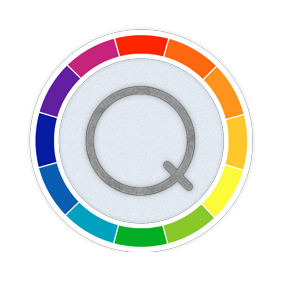You haven't scored enough points this time. To proceed, you will need to take the quiz again.




You haven't scored enough points this time. To proceed, you will need to take the quiz again.

You have not provided any answers yet.



0


Before you start your learning quest...
Many learning games use the same set of mechanics (like jumping, dodging, catching, etc.) to create a compelling experience. Chill Art breaks this mould by introducing a new style of play that focuses on putting learners into a state of flow, creativity and focus.
Chill Art challenges learners to create a picture inspired by a given word. This word is taken from a list that can be focused around your training topics, or alternatively, completely random. You could, for instance, challenge your users to create one of your products! Here’s the catch: your learners have to create these objects using a limited supply of circles, squares and triangles.
Inspired by Picasso’s idea of the ‘removal of the unnecessary’, Chill Art will place your learners into a state of deep focus, so they’re ready to enthusiastically consume any learning content that gets put in their path.
Well-being is about more than just happiness, it’s about how you feel and function. Adopting positive well-being behaviours will help you live life with happiness, engagement and a sense of purpose.
Everyone’s lives are a complex web of different things, from mental and physical health to social relationships and online behaviour. Maintaining positive well-being means holding all these different parts of your life in balance and practising self-care.
In this unit, you’ll learn:
When you’re ready to start, select continue!
Exercise can reduce depressive symptoms and anxiety whilst boosting your mood and improving the function of your brain.
If you find the idea of exercise daunting then try starting small and building up. Here are some simple ideas to get started:
Most importantly, try to keep moving. As you do more exercise you’ll notice your mood starts to lift.
Improving what you eat and drink can lift your mood, give you more energy, boost brain function and improve your health!
There are small changes you can make. If they feel daunting try working towards them rather than making a big change all at once.
Getting a good night's sleep is important. It can prevent health problems, improve your immune system and help manage brain function.
Having fun is good for your health. Isn’t that great news? So having fun isn’t time wasted (like some people tend to think), it’s an important act of self-care. Here are some science-backed tips to help you get the most from your fun:
Leading a more social life will help you live a longer, healthier and more fulfilling life. Here are some tips to help you promote your own social well-being:
Paying a bit more attention to how you’re feeling and what’s going on in the world around you is great for your mental health and general well-being. Try some of the following exercises to improve your mindfulness:
Digital well-being is about making sure your use of technology is helping you lead a happier and more fulfilled life. If you aren’t careful, it can do the opposite. Here are some helpful steps you can take to improve your digital well-being:
In this unit, you received different strategies to improve your own well-being. Take a few minutes to think about what steps you might take to improve your own well-being. Note them down below and you’ll receive a PDF with your reflections to help you remember your decisions.